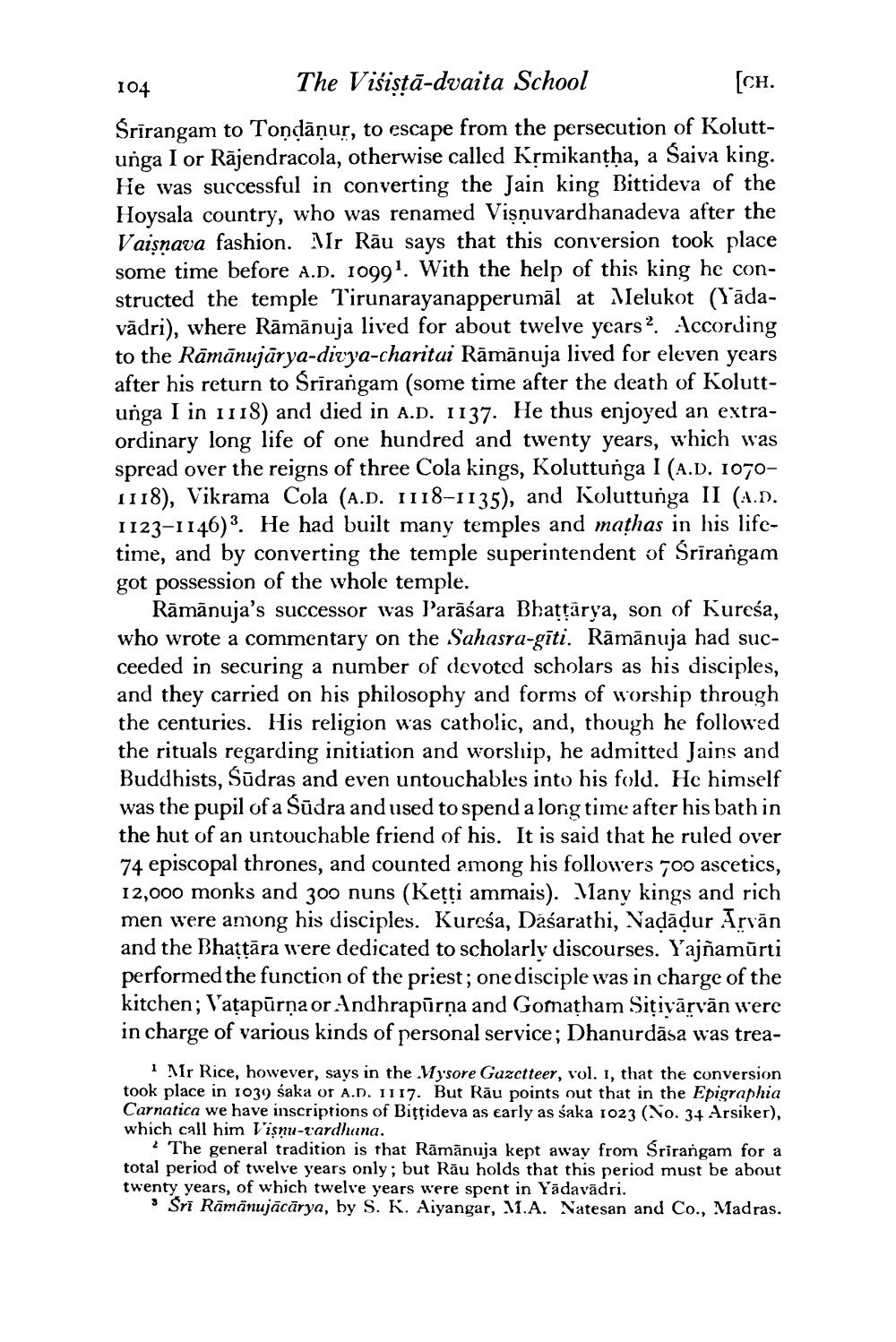________________
104 The Višistā-dvaita School
[ch. Śrīrangam to Toņdāņur, to escape from the persecution of Koluttunga I or Rājendracola, otherwise called Krmikantha, a Saiva king. He was successful in converting the Jain king Bittideva of the Hoysala country, who was renamed Visnuvardhanadeva after the Vaisnava fashion. Mr Rāu says that this conversion took place some time before A.D. 1099". With the help of this king he constructed the temple Tirunarayanapperumäl at Melukot (Vādavādri), where Rāmānuja lived for about twelve years?. According to the Rāmānujārya-divya-charitai Rāmānuja lived for eleven years after his return to Srirangam (some time after the death of Koluttunga I in 1118) and died in A.D. 1137. He thus enjoyed an extraordinary long life of one hundred and twenty years, which was spread over the reigns of three Cola kings, Koluttunga I (A.D. 10701118), Vikrama Cola (A.D. 1118-1135), and Koluttunga II (A.D. 1123-1146). He had built many temples and mathas in his lifetime, and by converting the temple superintendent of Srirangam got possession of the whole temple.
Rāmānuja's successor was Parāśara Bhattārya, son of Kuresa, who wrote a commentary on the Sahasra-gīti. Rāmānuja had succeeded in securing a number of devoted scholars as his disciples, and they carried on his philosophy and forms of worship through the centuries. His religion was catholic, and, though he followed the rituals regarding initiation and worship, he admitted Jains and Buddhists, Sūdras and even untouchables into his fold. He himself was the pupil of a Sūdra and used to spend a long time after his bath in the hut of an untouchable friend of his. It is said that he ruled over 74 episcopal thrones, and counted among his followers 700 ascetics, 12,000 monks and 300 nuns (Kețţi ammais). Vany kings and rich men were among his disciples. Kureśa, Daśarathi, Nadādur Arvān and the Bhattāra were dedicated to scholarly discourses. Yajñamūrti performed the function of the priest; one disciple was in charge of the kitchen; Vaţapūrņa or Andhrapūrņa and Gornațham Sițivārvān were in charge of various kinds of personal service; Dhanurdāsa was trea
Ir Rice, however, says in the Mysore Gazctteer, vol. I, that the conversion took place in 1039 saka or A.D. 1117. But Rāu points out that in the Epigraphia Carnatica we have inscriptions of Bittideva as early as saka 1023 (No. 34 Arsiker), which call him Visnu-vardhana.
? The general tradition is that Rāmānuja kept away from Srirangam for a total period of twelve years only; but Rāu holds that this period must be about twenty years, of which twelve years were spent in Yadavādri.
• Sri Rāmānujācārya, by S. K. Aiyangar, M.A. Natesan and Co., Madras.




